Windows 11 allows users to set up multiple monitors, which helps boost productivity. Screen resolution issues are the most common issues with a multiple monitor setup. In this article, I will show you how to fix dual monitors with different resolutions in Windows 11.
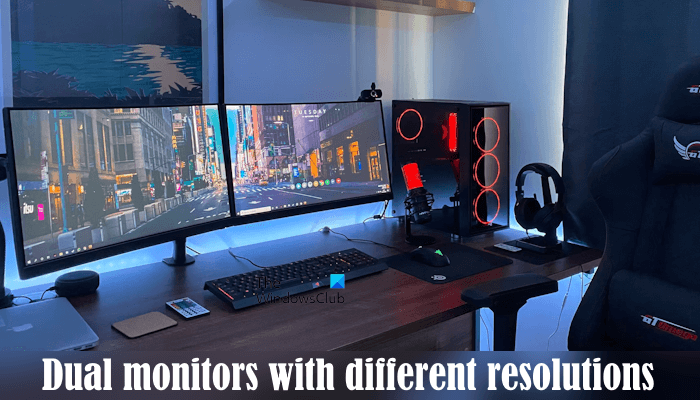
Fix Dual Monitors with different Resolutions in Windows 11
The dual monitor setup with different screen resolutions may impact your productivity. Use the following suggestions to fix dual monitors with different resolutions in Windows 11/10.
- Restart your graphics card driver
- Connect both monitors without the docking station
- Select the same screen resolution for both monitors
- Upscale the monitor having a lower resolution (if applicable)
- Roll Back the graphics card driver
- Update or reinstall the graphics card driver
All these fixes are explained in detail below.
1] Restart your graphics card driver
The first step is to restart your graphics card driver. Sometimes, issues occur due to a minor glitch. If this is the case with you, restarting the graphics card driver can help. To do this, press the Win + Ctrl + Shift + B keys. This will flicker your screen(s) for a second. After that, check if the issue persists.
2] Connect both monitors without the docking station
Have you connected both monitors with the docking station? If yes, connect them without the docking station and see what happens. If this fixes the issue, your docking station might not be capable of handling the higher screen resolutions for multiple monitors at the same time. Refer to the user manual of your docking station for more information.
In this case, you need to lower the resolution of your primary monitor. Now, set the same resolution to another display. This will fix the issue.
3] Select the same screen resolution for both monitors
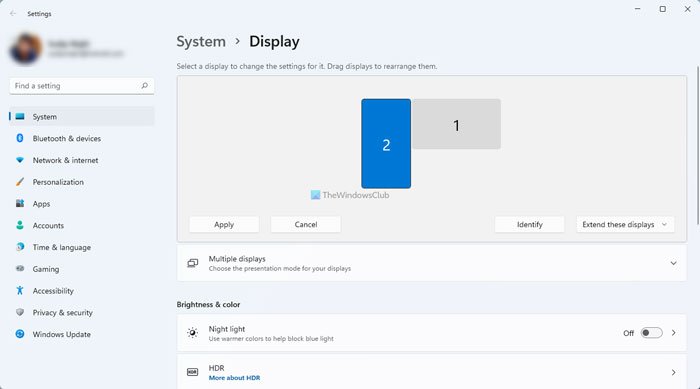
Sometimes, there is a minor issue but we are not aware of that. You might have selected a different resolution for your displays. Check this in Windows 11 Settings. Open Windows 11 Settings and select System > Display. If both your displays have different resolutions, you will see different sizes for your monitors (refer to the above screenshot). Now, select a monitor and change its resolution manually.
4] Upscale the monitor having a lower resolution (if applicable)
If your graphics card supports a higher screen resolution, you can upscale a lower-resolution display to a higher resolution, say a 1080P monitor to 4K resolution. I have explained the steps for both AMD and NVIDIA graphics cards here.
AMD GPU users need to follow the steps provided below:

- Open AMD Software: Adrenalin Edition.
- Select the Gaming tab, then select Display.
- Now, turn on the Virtual Super Resolution button.
After performing the above steps, you will see higher display resolutions in Windows 11 Settings. Open Settings and go to System > Display. Click on the Display resolution drop-down and you will see higher display resolutions.
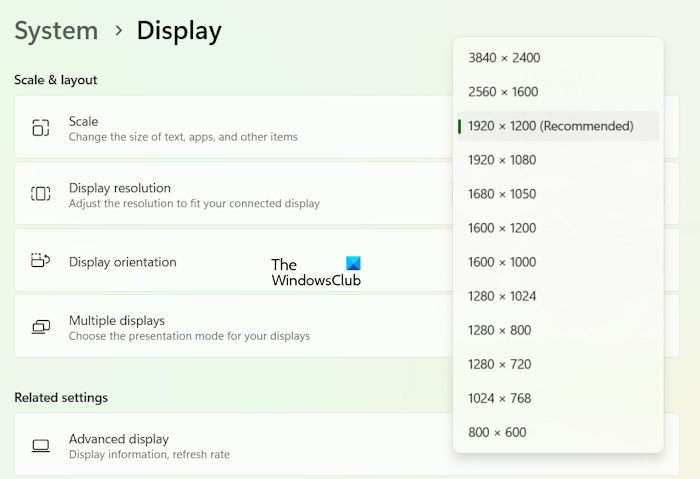
I tried it on my laptop with AMD graphics. My laptop screen only supports 1920 x 1200 pixels as the maximum resolution. When I enabled this feature, Windows 11 showed me higher screen resolutions (refer to the above screenshot).
Users with NVIDIA graphics cards have to follow the steps provided below:
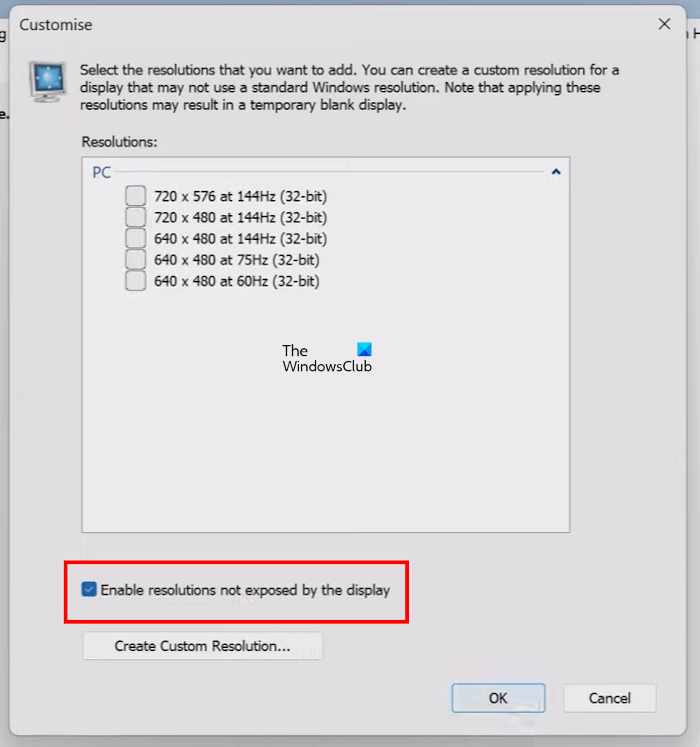
- Open NVIDIA Control Panel.
- Select the Change resolution option under the Display section on the left side.
- Select your display.
- Click Customize and select the Enable resolutions not exposed by the display checkbox.
- Click OK to save the changes.
After performing the above steps, both AMD and NVIDIA GPU users can define the custom screen resolution.
5] Roll Back the graphics card driver
The above fix should resolve the issue. However, if the problem persists, the issue might be with your graphics card driver. You can roll back it to the previous version. Follow the steps provided below:

- Open the Device Manager.
- Expand the Display adapters branch.
- Right-click on your graphics card driver and select Properties.
- Select the Driver tab and click on the Roll Back Driver button (if it is clickable).
- Follow the on-screen instructions to roll back your graphics card driver to the previous version.
6] Update or reinstall the graphics card driver
If the Roll Back Driver option is greyed out or rolling back the driver does not fix the issue, update your graphics card driver to the latest version or you can perform the clean installation of the graphics card driver.
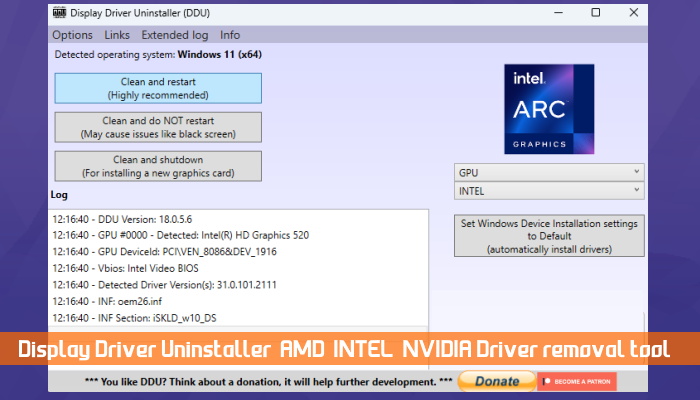
Download the latest version of your graphics card driver from the official website of your computer manufacturer. Now, install a third-party tool, DDU, and use it to completely remove the graphics card driver from your system. After doing this, run the installer file to reinstall the graphics card driver.
That’s it. I hope this helps.
Can a PC run 2 monitors at different resolutions?
Yes, a PC can run two monitors at different resolutions. However, this can create issues for you because when you switch from one monitor to another monitor, your mouse cursor will jump to another position. You can select different resolutions for both monitors in Windows 11/10 Settings.
How to fix the dual monitor display?
The fix depends on the problem you experience with your dual display setup. For example, if you cannot set different wallpapers on the dual monitor setup, you can use a third-party tool. If your second monitor is flickering, you should consider updating or reinstalling your graphics card driver.
Read next: Set up Multi-Monitor Gaming on a Windows PC.